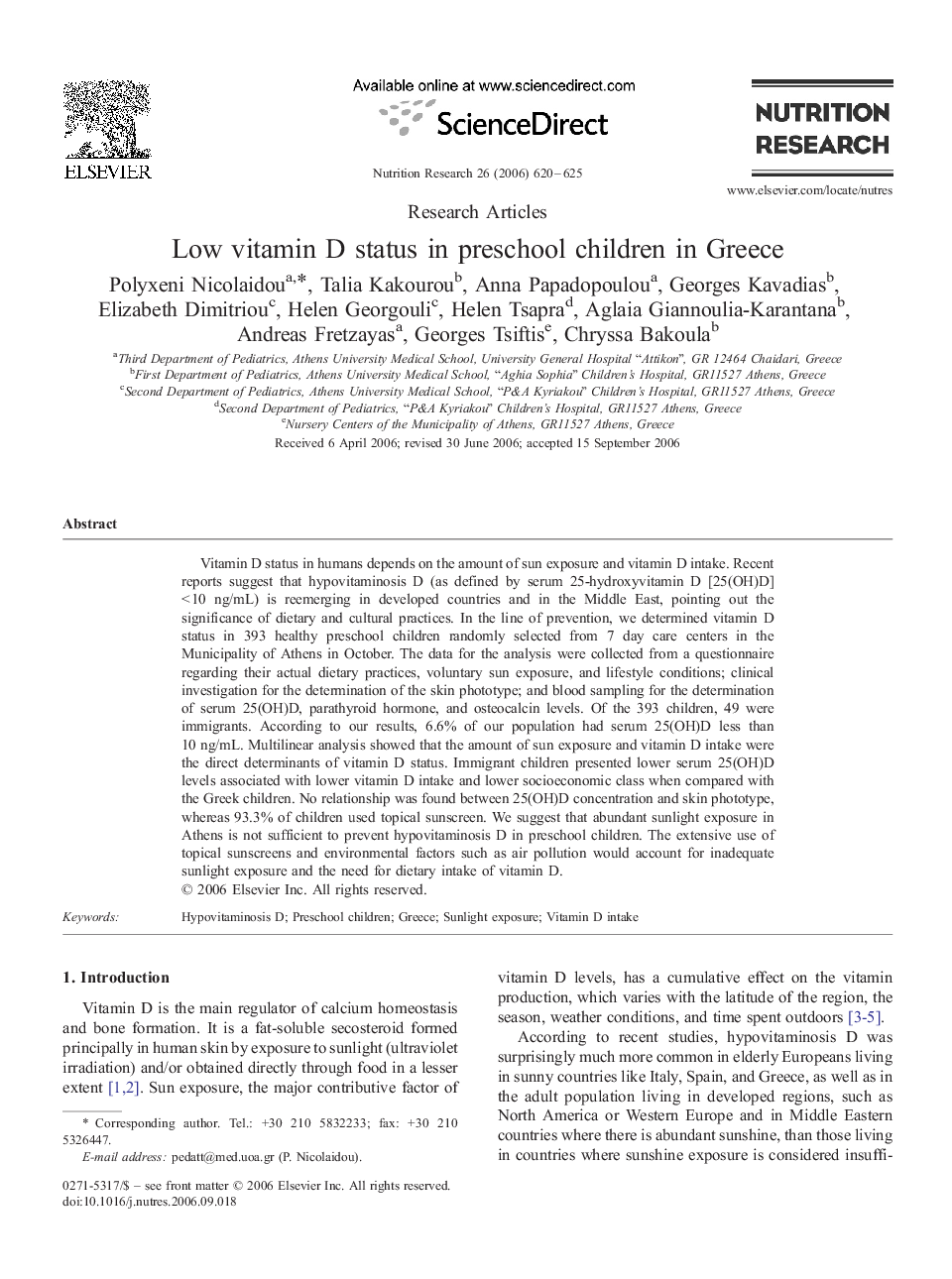| Article ID | Journal | Published Year | Pages | File Type |
|---|---|---|---|---|
| 2809757 | Nutrition Research | 2006 | 6 Pages |
Vitamin D status in humans depends on the amount of sun exposure and vitamin D intake. Recent reports suggest that hypovitaminosis D (as defined by serum 25-hydroxyvitamin D [25(OH)D] <10 ng/mL) is reemerging in developed countries and in the Middle East, pointing out the significance of dietary and cultural practices. In the line of prevention, we determined vitamin D status in 393 healthy preschool children randomly selected from 7 day care centers in the Municipality of Athens in October. The data for the analysis were collected from a questionnaire regarding their actual dietary practices, voluntary sun exposure, and lifestyle conditions; clinical investigation for the determination of the skin phototype; and blood sampling for the determination of serum 25(OH)D, parathyroid hormone, and osteocalcin levels. Of the 393 children, 49 were immigrants. According to our results, 6.6% of our population had serum 25(OH)D less than 10 ng/mL. Multilinear analysis showed that the amount of sun exposure and vitamin D intake were the direct determinants of vitamin D status. Immigrant children presented lower serum 25(OH)D levels associated with lower vitamin D intake and lower socioeconomic class when compared with the Greek children. No relationship was found between 25(OH)D concentration and skin phototype, whereas 93.3% of children used topical sunscreen. We suggest that abundant sunlight exposure in Athens is not sufficient to prevent hypovitaminosis D in preschool children. The extensive use of topical sunscreens and environmental factors such as air pollution would account for inadequate sunlight exposure and the need for dietary intake of vitamin D.
